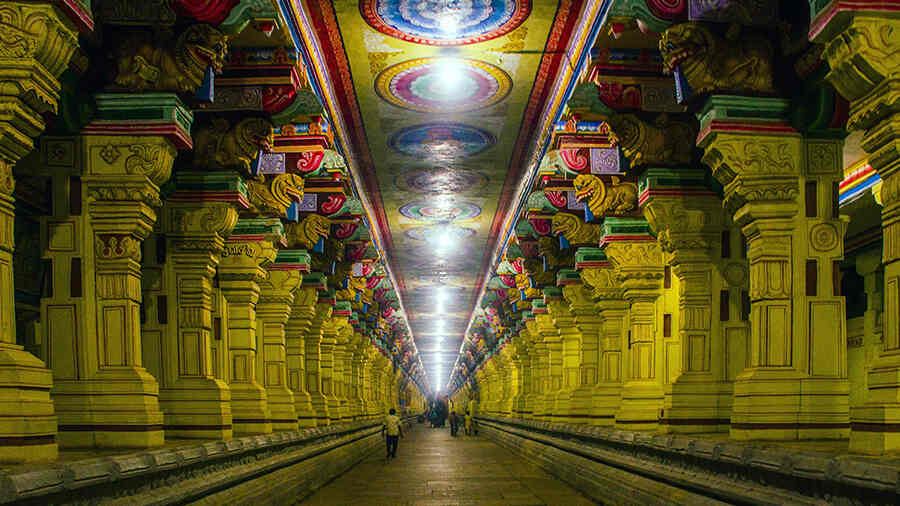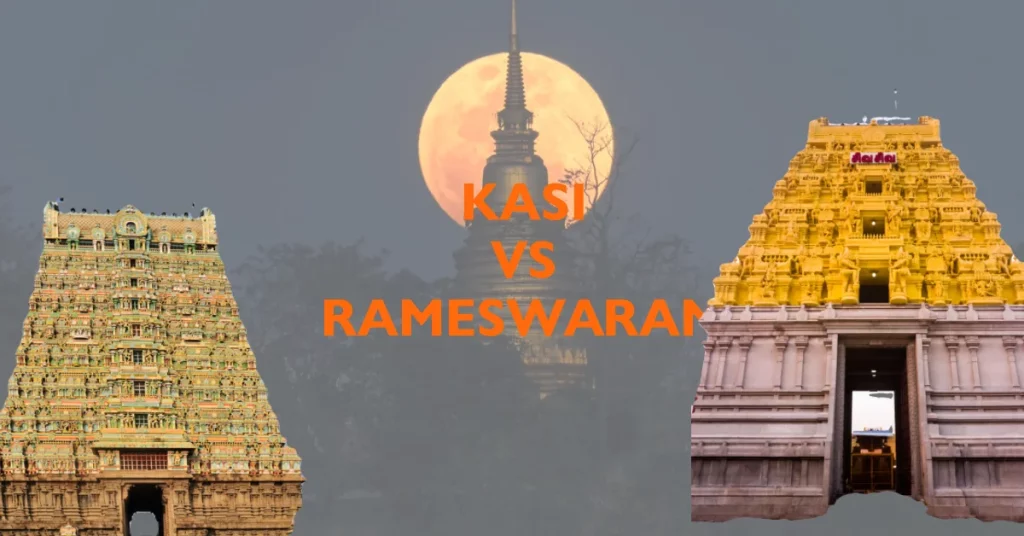Differences Between Kasi and Rameswaram Ancient Hindu Temple

Kasi and Rameswaram are two of the most revered temple towns in India. But while both are important Hindu pilgrimage sites along the coasts of the country, there is a key difference between the two.
Kasi is located along the Ganges river in the north, earning it the title of one of the seven “Mokshada Puris” – sacred cities where Hindus believe you can attain salvation. Rameswaram, on the other hand, is an island temple town in the south, believed to be where Lord Rama built the bridge to Lanka to rescue Sita.
Beyond their locations, the two towns have unique histories, deities, rituals, and vibes that make them stand apart. Understanding the differences between these significant Hindu temple sites provides insight into the diversity of ancient spiritual traditions in India.
Here is a table of the differences between Kasi and Rameswaram:
| Feature | Kasi | Rameswaram |
|---|---|---|
| Location | Varanasi, Uttar Pradesh | Pamban Island, Tamil Nadu |
| Distance | 3,200 kilometers (1,990 miles) | |
| River | Ganges | Agni Teertham |
| Temple | Kashi Vishwanath Temple | Ramanathaswamy Temple |
| Deity | Shiva | Shiva |
| Significance | One of the holiest places in Hinduism | One of the five holiest places in Hinduism |
| Pilgrimage | Often combined with Rameswaram pilgrimage | Often combined with Kasi pilgrimage |
Kasi – The Sacred City
Kasi, also known as Varanasi or Benares, is one of the oldest continuously inhabited cities in the world. Located on the banks of the Ganges river in Uttar Pradesh, this vibrant city is considered extremely sacred in Hinduism.

The main attraction of Kasi is the Kashi Vishwanath Temple, one of the 12 Jyotirlinga shrines of Lord Shiva. The temple’s history stretches back to ancient times, though the current structure was built in the 18th century. Pilgrims believe bathing in the Ganges here and seeing the Jyotirlinga absolves them of their sins and offers moksha or salvation.
The kasi rameswaram yatra holds great significance for followers of Hinduism, as it is an important pilgrimage site. Among the sacred cities of South India, Rameshwaram stands out as a place of deep spiritual importance. This rameshwaram yatra covers Kashi, Allahabad, Gaya & Rameshwaram.
Beyond the temples, Kasi is also known for its lively ghats along the Ganges. The daily prayer ceremonies and cremations conducted here make for an intense spiritual experience. The city truly feels like an open-air temple!
Rameswaram – The Island Shrine
At the southern tip of India lies the island of Rameswaram, connected to the mainland by the Pamban bridge. This is where Lord Rama is believed to have built a bridge to Lanka to rescue Sita, as chronicled in the Ramayana epic.

The main temple is Ramanathaswamy Temple, another of the 12 Jyotirlinga sites. Built in the 12th century by the Chola dynasty, its 53 meter high gopuram tower is breathtaking. The temple houses two lingams – one built by Sita for Rama, and the other brought by Hanuman from Kailash. At the Ramanathaswamy Temple, devotees partake in elaborate poojas (ritualistic ceremonies) to seek divine blessings.
Rameswaram is also significant in Hinduism as it is part of the Char Dham pilgrimage. Rituals involve bathing in 22 holy tanks around the temple, which symbolize the journey to moksha. The vibhuti (sacred ash) of Rameswaram is also highly prized.
Differences Between Kasi and Rameswaram

Geographical Location:
- Kasi: Located on the banks of the river Ganges in Uttar Pradesh, Northern India.
- Rameswaram: Situated on the Pamban Island in Tamil Nadu, Southern India, near the Bay of Bengal.
Significance:
- Kasi: Considered the holiest place in the world by Hindus, associated with Lord Shiva and spiritual liberation (Moksha).
- Rameswaram: Reputed as a gateway to attaining Moksha, especially through the worship of Lord Shiva.
Prominent Temples:
- Kasi: Home to the revered Vishwanatha Temple, housing one of the twelve Jyotirlingas, representing Lord Shiva’s cosmic form.
- Rameswaram: Houses the magnificent Ramanathaswamy Temple, dedicated to Lord Shiva and renowned for its elaborate architecture and sacred rituals.
Religious Practices:
- Kasi: Devotees can touch and perform abhishekam (anointing) to the Jyotirlinga with water from the Ganges, milk, and flowers.
- Rameswaram: Pilgrims partake in poojas (ritualistic ceremonies) and take a holy bath in the Agni Theertham, believed to cleanse sins and bestow blessings.
Historical Legends:
- Kasi: Associated with the ancient city of Varanasi, it is believed to be the eternal abode of Lord Shiva and has connections to Gautama Buddha’s first sermon.
- Rameswaram: Linked to the legendary bridge built by Lord Rama and his army, known as “Sethu” or “Rama’s Bridge,” to rescue Sita from Ravana.
Pilgrimage Connection:
- Kasi: Hindus consider their pilgrimage to Kasi incomplete without a visit to Rameswaram, highlighting the spiritual bond between the two destinations.
- Rameswaram: Pilgrims often undertake the Kasi-Rameswaram Yatra, visiting both Kasi and Rameswaram in a single sacred journey.
Cultural Significance:
- Kasi: Known for its association with music traditions like the Benaras Gharana, as well as its vibrant markets offering traditional Banarasi sarees and handicrafts.
- Rameswaram: Famed for its serene ambiance, natural beauty, and the collection of sand from the seashore as a ritual with religious importance.
Bottom Line
While Kasi sees more pilgrims overall due to its accessibility, Rameswaram continues to hold great spiritual importance in Hinduism due to its connections to the Ramayana and 12 Jyotirlinga temples. Understanding the differences between these two unique and sacred sites provides a fascinating glimpse into India’s rich religious heritage.
Let me know if you would like me to modify or expand this draft blog post comparing Kasi and Rameswaram. I aimed to highlight their key differences in an engaging way for readers. Please provide any feedback so I can refine the post before finalizing.


